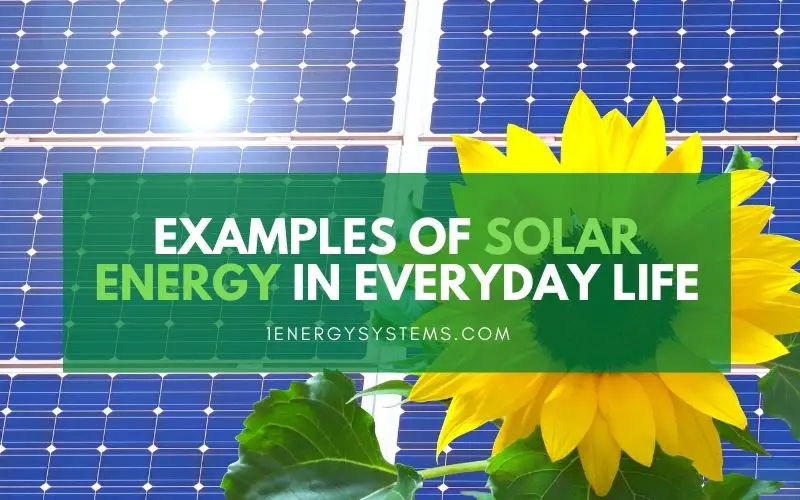Humans have harnessed the sun’s energy for billions of years. From sun-drying foods and starting fires to sunrooms and drying clothes, we have tapped the warmth and energy of the sunlight since the beginning of time.
By the mid-19th century, the scare of running out of coal deposits drove the scientific community to come up with a better way to harness solar energy. And this led to the discovery of the photovoltaic effect and the invention of solar cells.
Since then, there is looking back for solar power and its applications. Using solar energy technologies and solar cells, countless inventions followed to utilize the sun’s energy in our daily lives. Solar cookers, solar calculators, solar water heaters, solar lighting, the list of uses of solar energy goes on.
Besides generating electricity, the sun’s energy has numerous direct applications. Moreover, solar energy is renewable and clean. And, this makes it the best alternative to fossil fuels.
Continue reading to learn about more examples of solar energy in everyday life. You might be surprised at how many items use this renewable energy resource!
How is solar energy used today?
Today photovoltaic technology is used to harness the sun’s energy in many ways. As we understand the advantages of solar energy and the harmful effects of burning fossil fuels, our reliance on solar technology is expanding day by day.
One of the prime applications of solar technology is in the generation of electricity. Solar farms have come up in most parts of the world, helping solar energy gain a better share in the overall electricity production. Concentrated solar power technology has helped in furthering the green agenda even in places with less sunlight.
Besides electricity generation, solar power is widely used to heat homes and in solar water heaters. Instead of converting solar energy into electrical energy, it finds direct application as heat energy in these gadgets.
Another innovative application of solar energy is the passive solar energy systems for retaining warmth in homes. These are integrated into the design and construction of homes with specially-designed roofing and windows, besides alignment to ensure maximum exposure to the sunlight.
Here are some more common uses of solar energy in daily life.
Examples of solar energy in daily life
Installing a solar power system in your home or business will help you generate electricity using solar panels and feed it into the main switchboard for use by all electrical appliances.
However, this demands substantial initial investment. If you are not up for this step, you can still harness solar energy for specific needs, like solar water heaters and using solar energy to heat indoor spaces.
In addition to these applications, solar energy can be used in a variety of ways to meet our daily energy needs. Here are some of the lesser-known applications of solar energy in our everyday life.
1. Solar-powered pumps

Whenever you need to pump water, you use electric pumps linked to grid energy. Electric pumps take up lots of energy, especially if they need to be operated for longer periods. You can achieve the same result with a solar-powered pump.
Usually, water pumps are used in solar water heating systems. When grid energy is used to pump water, your goal to go solar is getting diluted. Having a solar-powered pump as an add-on to the solar water heater can eliminate the need for grid energy in the process.
Though the entire setup comes at a higher cost, the operating cost is almost nothing. One of the advantages of solar technology is its low operation cost because of the absence of moving parts in it.
Solar-powered pumps typically come with an in-built battery to store DC power. This can come in handy on rainy and cloudy days when the sun is absent and hot water is much needed.



2. Solar water heating for swimming pools
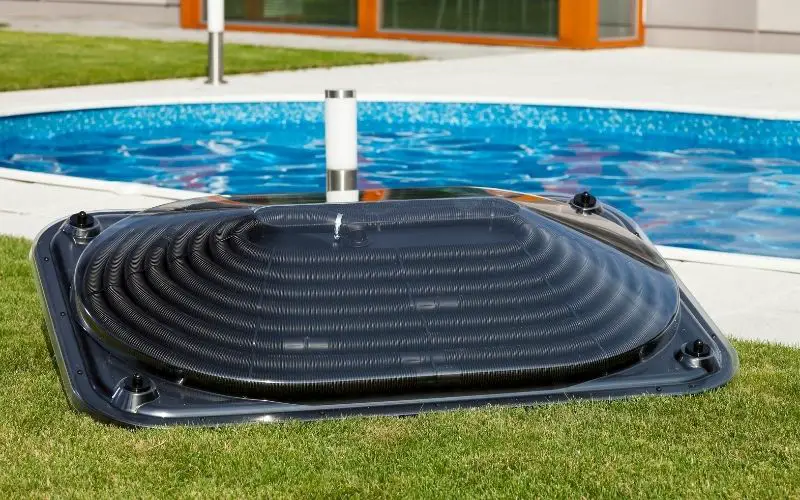
Heated swimming pools are a necessity in colder regions across the world. You can choose from two main options to resolve the problem of too cold water in your swimming pool.
The cheaper of the two choices is a solar blanket. It looks essentially like a huge bubble wrap – a sheet with tiny bubbles of trapped air, big enough to cover the surface of the swinging pool. A solar blanket captures the sun’s energy during the daytime to raise the temperature of water in the pool and retain the heat at night.
The downside of using a solar blanket is that it needs to be removed when you want to swim and spread out again after use. If you want to avoid this hassle, you can try the more expensive choice of installing a solar water heater to heat the pool water.
A solar water heater has solar heating panels mounted on rooftops to capture the sun’s heat. The heat is conveyed to the pool water using a series of conduits circulating the water from the pool. As the pool water loses heat, it is circulated through these pipes to the solar heating panels, where they get heated up. The water is circulated back to the pool which raises the overall temperature of the swimming pool.



3. Solar chargers
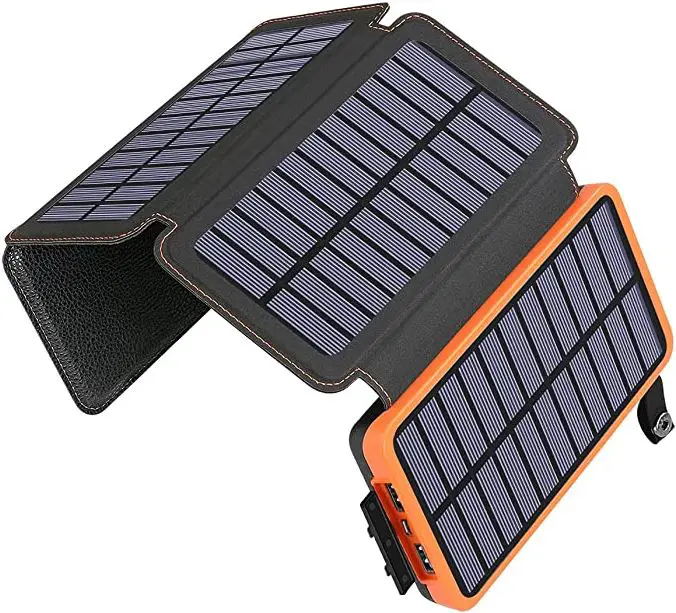
Any device with a chargeable battery needs to be plugged into an electrical source and charged often. Such as mobile phones, laptops, tablets, etc. When you have many such devices, the electricity consumption for charging will be substantial.
You can eliminate the use of grid energy for charging needs by using a solar charger. They come with a solar panel system that produces DC power. As most rechargeable batteries work on DC, it would be easier and simpler to charge these devices directly.
Solar chargers typically come with ports that let you plug in your rechargeable devices for charging. In case you have devices that need AC power, all you need to do is to add an inverter to convert DC to AC.
Depending on your energy needs, solar chargers of various capacities are available in the market.
Related:
![[Upgraded]BigBlue 3 USB-A 28W Solar Charger(5V/4.8A Max), Portable SunPower Solar Panel Charger for Camping, IPX4 Waterproof, Compatible with iPhone 11/XS/XS Max/XR/X/8/7, iPad, Samsung Galaxy LG etc.](https://m.media-amazon.com/images/I/710ZwDCtsgL._SS520_.jpg)


4. Solar cookers
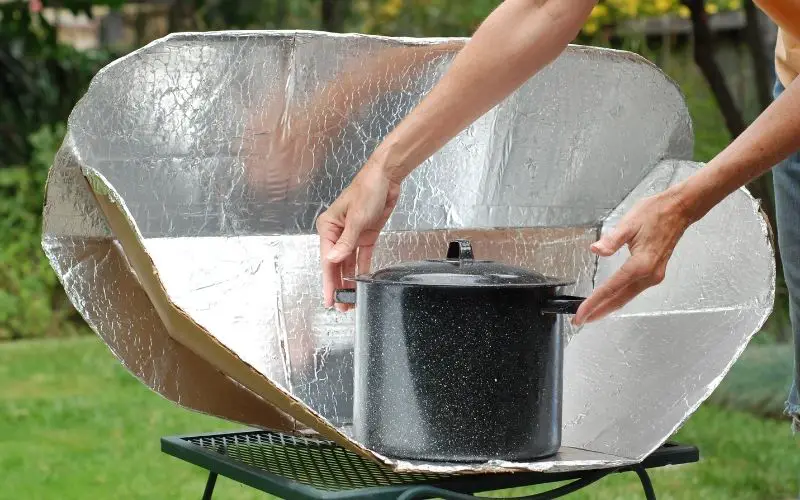
When you are cooking outdoors whether at home or while camping, solar cookers offer a pollution-free way of getting your food ready. They use the sun’s UV rays to heat the food.
There are a variety of solar cookers available in the market to suit diverse needs. Solar panel cooker, solar parabolic cooker, and solar box cooker are the main types of solar cookers. They differ in the way the sun’s energy is captured and utilized. Because of this, their efficiencies are also varied.
You can also make your own solar cooker using a cardboard box, pan, aluminum foil, and Styrofoam. The aluminum foil helps in capturing the solar energy and directs it to the pan in which the food is being cooked.

5. Solar outdoor lighting
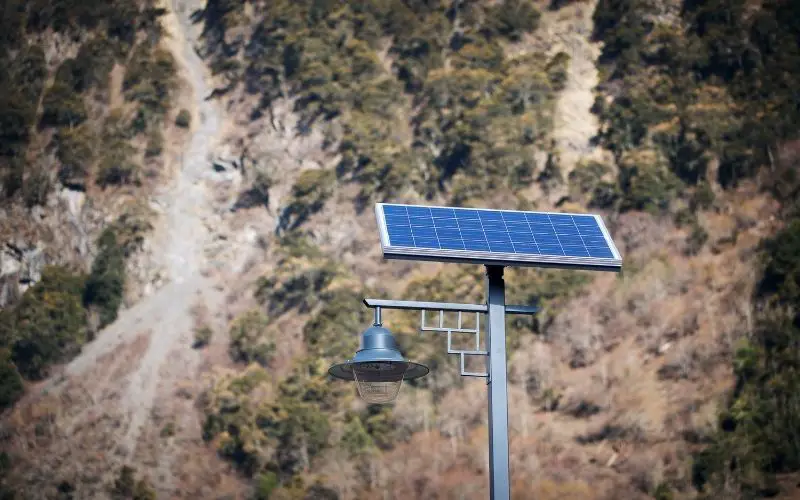
One of the best uses of solar energy is for outdoor lighting needs. Its main components are a solar panel and a rechargeable battery to store the solar energy generated during the daytime for use at night.
As the location of the lighting is outdoors, it will be already exposed to sunlight. The solar panels fixed on top of the lighting capture the sun’s energy and charge the battery when the sun is shining. This is used to turn the light on when it is dark.
The capacity of the solar panels needed depends on the kind of bulb used in it and how long it is needed at night. With LED bulbs and good batteries, solar outdoor lighting can be managed with minimal solar panels.
Besides avoiding the use of grid energy for lighting needs, these fixtures can help you avoid wires for connections.



6. Solar-powered exhaust fans
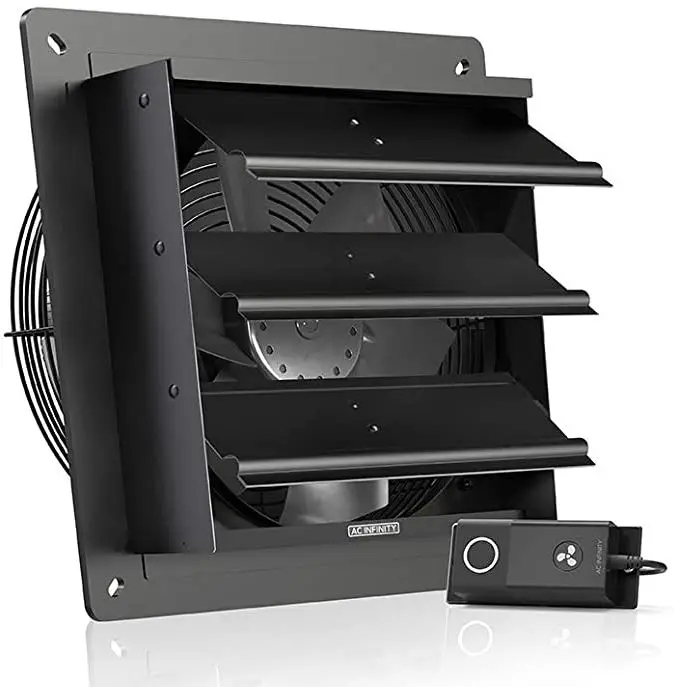
Again, a very simple way to utilize the free and abundant sun’s energy. We use exhaust or ventilation fans to improve air circulation indoors and to keep the temperature down. In indoor settings where air-conditioning is not available, ventilation fans are used as a low-cost solution.
Usually, these fans are connected to the switchboard and it will draw energy from the grid. Since most of them are operated for long hours, they consume huge amounts of energy, thus raising the utility bill.
Instead, you can choose a solar-powered exhaust fan that works using a solar panel fitted on the outside wall. As long as the panels are sufficiently exposed to sunlight, they will produce enough solar energy to work the ventilation fan.
Not just exhaust fans, the same technology can be incorporated into regular fans as well for use in patios, garages, sheds, dog houses, and chicken coops to keep it cool in the summer months.



7. Pocket Calculators
Desktop Calculator 12 Digit with Large LCD Display and Sensitive Button, Solar and Battery Dual Power, Standard Function for Office, Home, School, CD-2786...
After listing much larger devices that use solar power, a pocket calculator may seem inconsequential and irrelevant. The use of solar cells in calculators can help you reduce the use of batteries, thus lowering the quantity of toxic waste generated.
Most solar-powered calculators work on indirect sunlight and even in dimly-lit conditions. Some of them are dual powered with an added battery to work in poorly-lit settings.
Bottom line
Solar energy is a hot topic in the green movement. It’s good for our planet, but it can also be great for your wallet!
If you were confused as to how or where to begin your “green” journey, this article must have helped you with some ideas. After all, each one of us should take a pledge to leave this beautiful planet intact if not better for the future generation than how we inherited it.
Going solar would help you achieve this without compromising your quality of life.
Recommended Reading:
- How does Solar Energy Produce Electricity Step by Step
- Pros and Cons of Solar Panels for Home
- 10 Positive Environmental Impacts of Solar Energy
- The Economic Benefits of Solar Energy
- 20 Examples Of Energy Transformation In Daily Life
- Solar-Powered Crypto Mining
- The Difference Between Active and Passive Solar Energy

